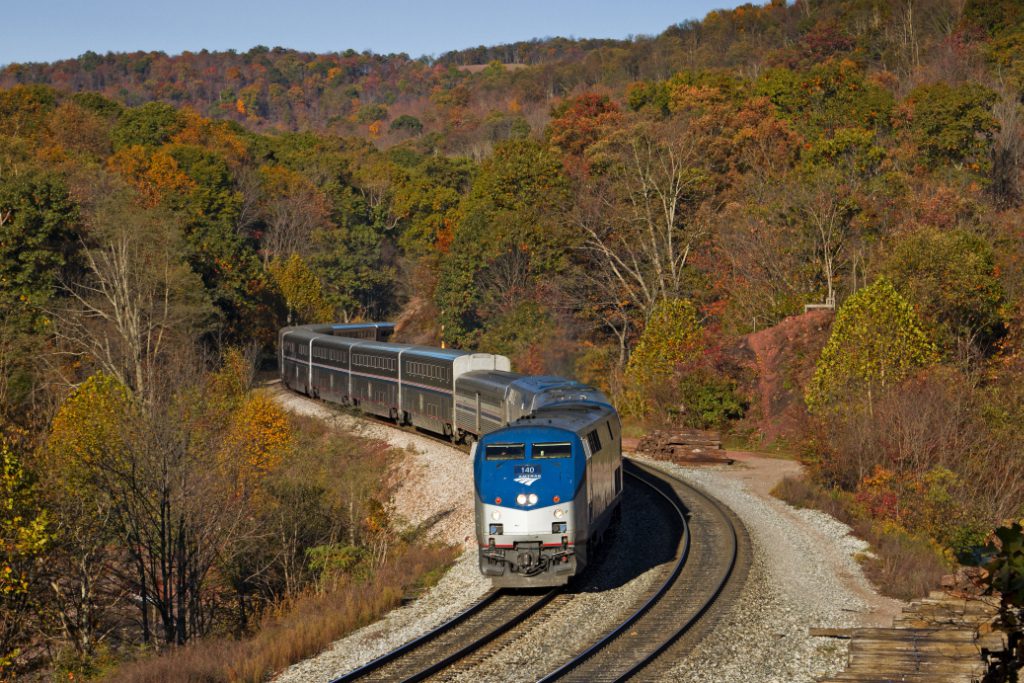Skift Take
Former Delta CEO Richard Anderson has been spearheading a revamp of the U.S. national railway through boosting safety, driving more profits from its co-branded credit card, and creating a mix of more low-cost and premium services in the U.S. northeastern corridor. Anderson's tricky balance is being ambitious while trimming longstanding losses.
When the former Delta Air Lines CEO Richard Anderson joined Amtrak two years ago, he faced a couple of top-priority tasks. Amtrak needed to ensure safety after recent accidents. The national railway also needs to make enough money to cover its costs.
On safety, Anderson accelerated several changes to how Amtrak operates. These safety programs led to double-digit drops in passenger and employee safety incidents in the year through September, the railway said on Friday in a rare press briefing on its operations and finances.
The railway also trimmed its financial losses. During the fiscal year ending in September, Amtrak reduced its operating loss to $29.8 million, down 82 percent the year before.
Next year, the railway may break even — meaning, it will cover its costs after accounting for an annual government subsidy — for the first time in its history.
“The long-term goal will be to run the operation of the railroad on a positive cash basis,” said Anderson, president and CEO of Amtrak.
“In essence, we’ll pay for the cost for operating the railroad day-to-day,” Anderson said. “We’ll use our grants to fund the capital infrastructure, much in the same way that other transportation modes are funded in America, like highways, airlines, air traffic control, rivers, bridges, and ports.”
In the year through September, Amtrak spent $1.6 billion on capital improvements, 9.4 percent higher than the year before. It bought new train cars, repaired bridge ties, and refurbished some stations.
“You can’t cut your way to becoming a strong company from a financial standpoint,” said Tony Coscia, chair of the board at Amtrak, speaking at a press conference. “Candidly, our spending reflects a reversal of decades of failure to invest in the railroad.”
Acela and Northeast Corridor Revamp
Starting in 2021, Amtrak will phase in changes to the train cars and schedules on its profitable routes in the densely populated Northeastern corridor between Richmond, Virginia, and Portland, Maine.
For its premium-priced Acela express service, the company plans to swap in new train cars that will eventually give Amtrak a 40 percent increase in capacity. Another change that began in September was the start of non-stop Acela service during peak times between New York and Washington, D.C., which the railway wants to expand between New York and Boston.
For price-conscious passengers, Anderson wants in the long-term to increase Amtrak’s lower-cost service and to expand service to some neglected stations.
“We want a low-fare train,” Anderson said. “Much like with European service, we need a train that would stop at virtually every location we can in the corridor.”
To that end, Amtrak has begun a process to buy more modern, modular, single-level train cars that could handle the variation in platform lengths at stations. In a separate move, it recently awarded a contract 75 new locomotives to replace some of its aging long-distance trains.
Bringing Airline-Style Savvy
Anderson has been drawing on a similar toolkit to fine-tuning the railway operator that he saw working at Delta.
Exhibit A: Amtrak has been driving more revenue from its co-branded credit cards, which airlines find profitable.
Anderson described the co-branded credit cards as being “a real bright spot for Amtrak.”
“Unlike airlines which don’t provide enough [reward] seats to frequent flyers, we have the seats,” Anderson said. “The margins on the credit card business are the highest margins we have, and we should expect in the next fiscal year near double-digit growth in the revenues we derive from the card.”
The company adjusted the program’s perks and made it easier to use on its mobile app. In August and September, it ran a bonus promotion with the biggest mileage award ever.
The moves came after it hired vendor ICF Next to revamp the customer experience in a move that doubled customer sign-ups.
Looking a Decade Ahead to U.S. Transportation Needs
Anderson believes that rail travel will become more critical to the U.S. in the next decade for a few reasons. As airlines cut back service from smaller airports, Amtrak will become a more essential long-distance rail provider. As the population increases, road gridlock will put pressure on interstate highways. And as climate change progresses, railways may gain popularity by spewing out less carbon than planes do.
In September, Anderson spoke about many of the above issues with extra context at Skift Global Forum in New York City.
The Daily Newsletter
Our daily coverage of the global travel industry. Written by editors and analysts from across Skift’s brands.
Have a confidential tip for Skift? Get in touch
Tags: amtrak, earnings, rail, rail travel
Photo credit: The Capitol Limited travels through Pennsylvania. Amtrak's top executives discussed the company’s 2019 fiscal year results with the media. Chase Gunnoe / Amtrak
